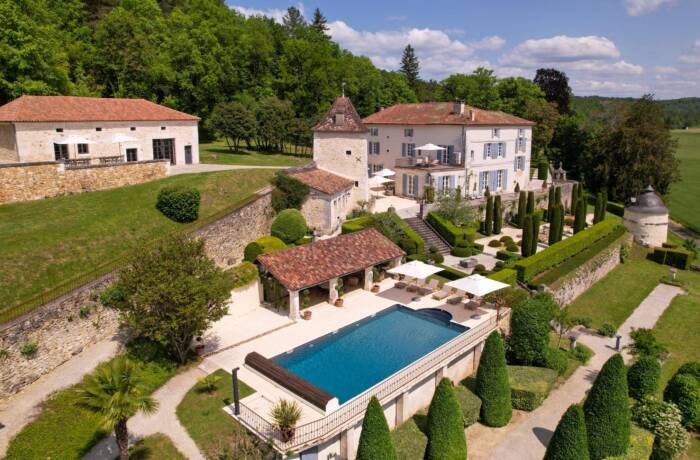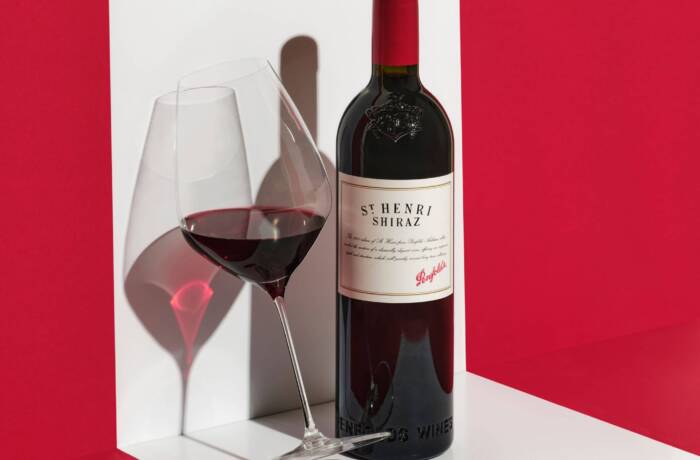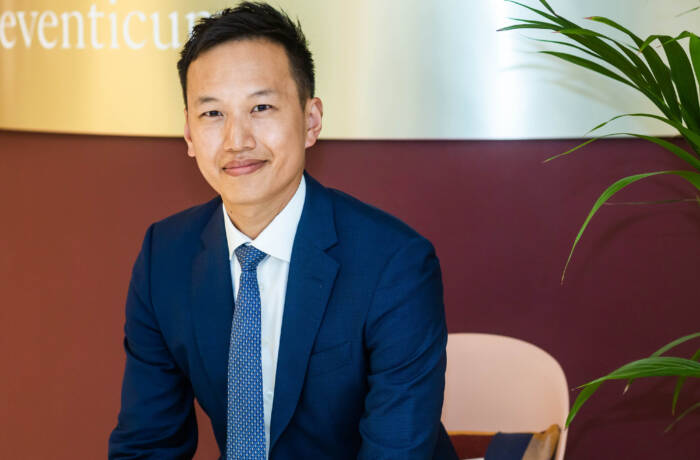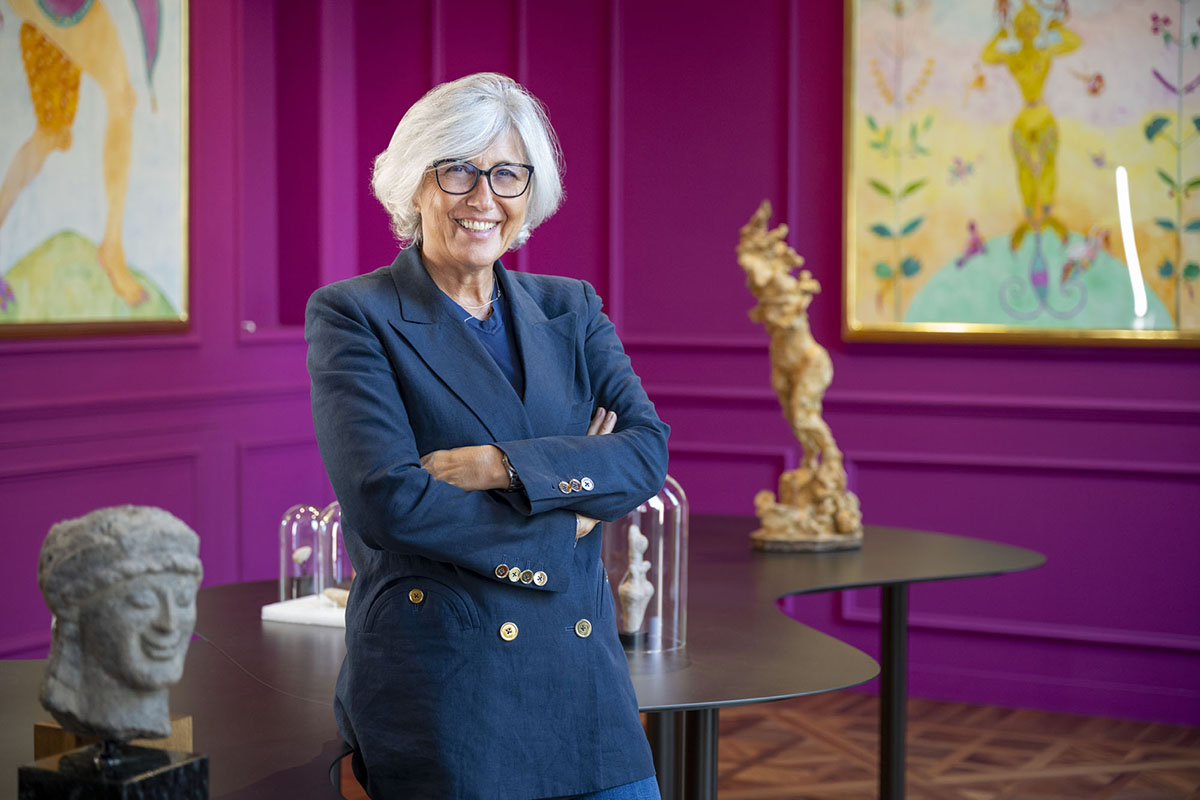
Giovanna Forlanelli Rovati in the Sala Ontani. Photo by Giovanni de Sandre via Fondazione Luigi Rovati
LUX speaks to Giovanna Forlanelli Rovati At the Fondazione Luigi Rovati in Milan, where she is putting experimental dialogues between ancient and contemporary art, and artistic and scientific enquiry at the heart of an original project
LUX: You trained in medicine and science and worked in pharmaceuticals. Does that give you a different way of perceiving art?
Giovanna Forlanelli Rovati: Culture and art are unpredictable, and so are research and scientific discovery – both form the basis of Humanism. Openness and curiosity have always marked my experiences and my scientific training leads me to experiment with new artistic languages. The idea of connecting art and science led to establishing the Fondazione Luigi Rovati.
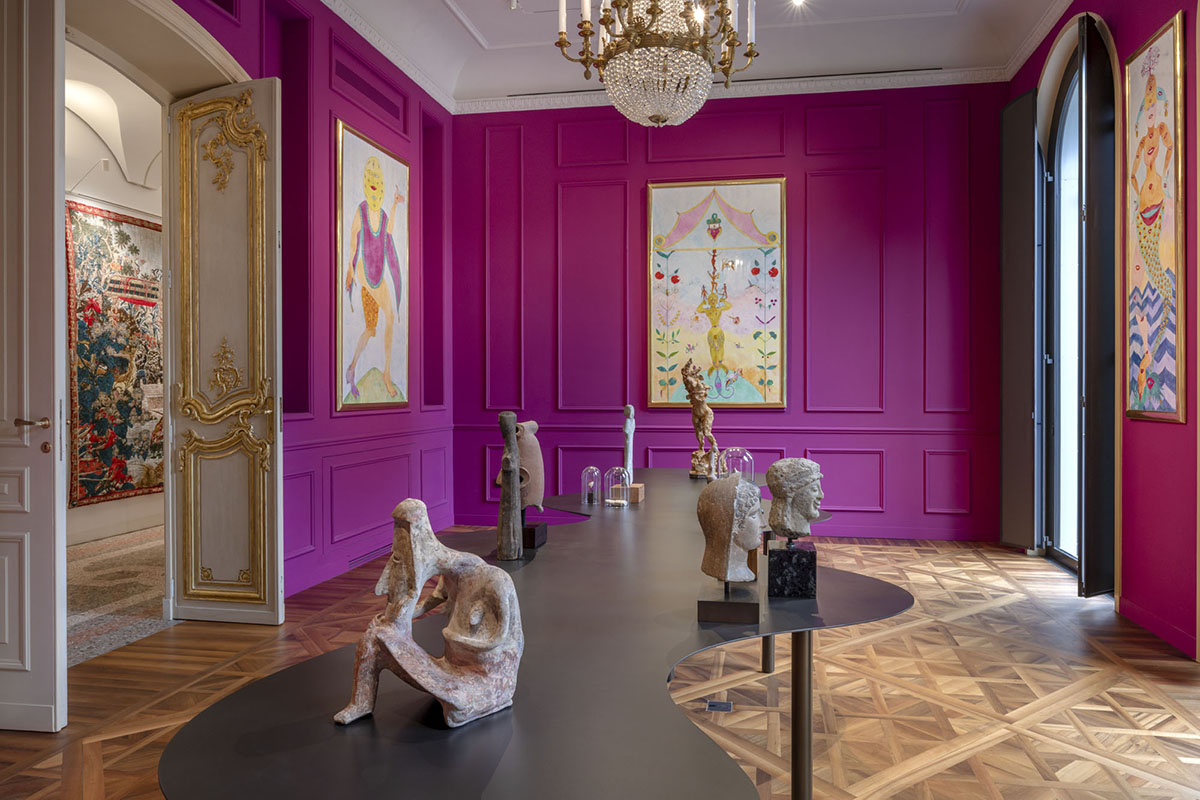
Old meets new in the fondazione’s Sala Ontani
LUX: Have you always been fascinated by Etruscan art and craft?
GFR: I became interested in contemporary art in the 1990s in New York, while my husband Lucio is passionate about classical art, in particular Etruscan. Through our passions, we realised that there is an extraordinary dialogue between the ancient and contemporary. The project we share is focused on this.
Follow LUX on Instagram: luxthemagazine
LUX: Are there links between modern and contemporary art and ancient art?
GFR: Certainly, yes, there is a link between them. The aim of the fondazione is to represent and explain these links, but it is also the opposite: reading archaeology in the contemporary world opens it up to new visions.
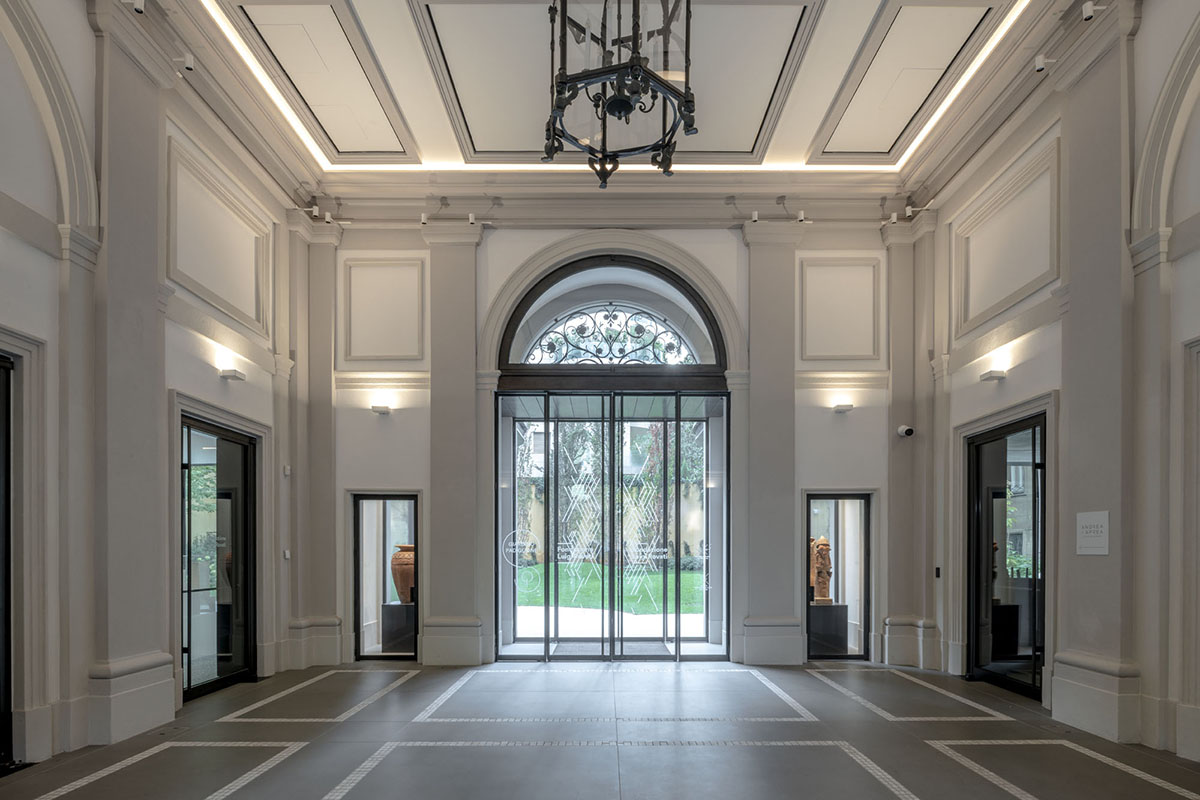
The hall of the palazzo housing the fondazione
LUX: Your foundation combines a top-floor Michelin-starred restaurant, ground-floor bistro and garden, viewing rooms and a contemporary architectural creation underground. Why is that?
GFR: Establishing the fondazione was a constantly evolving process. “Wonder” is the word most used by our visitors, the same word used to define the great Renaissance artworks. Visiting a museum means experiencing moments of pleasure and wellbeing in the very beauty of the museum. First, the immersion in the art, but also being in the garden, shop, bistro or restaurant.
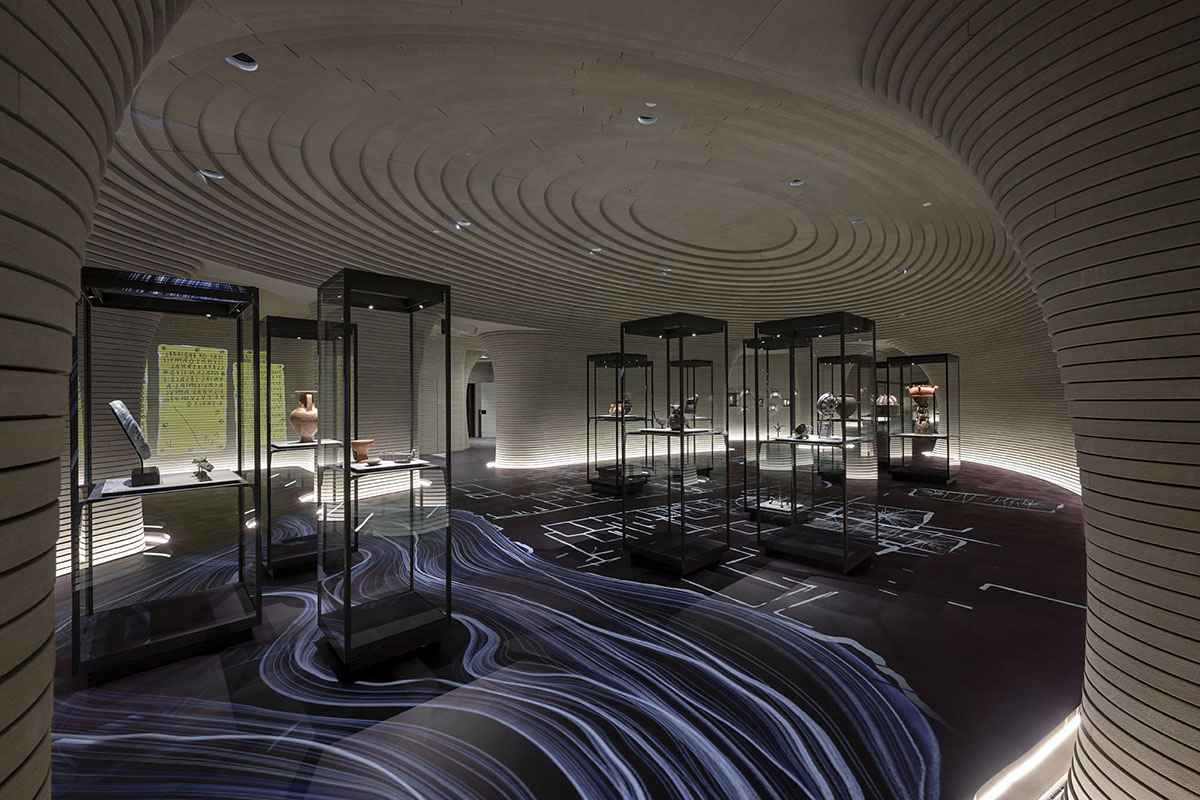
“Living in an Etruscan City” on the hypogeum floor
LUX: Do ordinary people have little chance to view great art, now so much of it is owned by private collectors?
GFR: Yes, there are many collectors don’t show their works, but many others open private museums. In our case, the fondazione acquired Italian art collections from abroad and from private Italian collections specifically to display them in our museum. Our vision is to implement a project of inclusion and social utility.
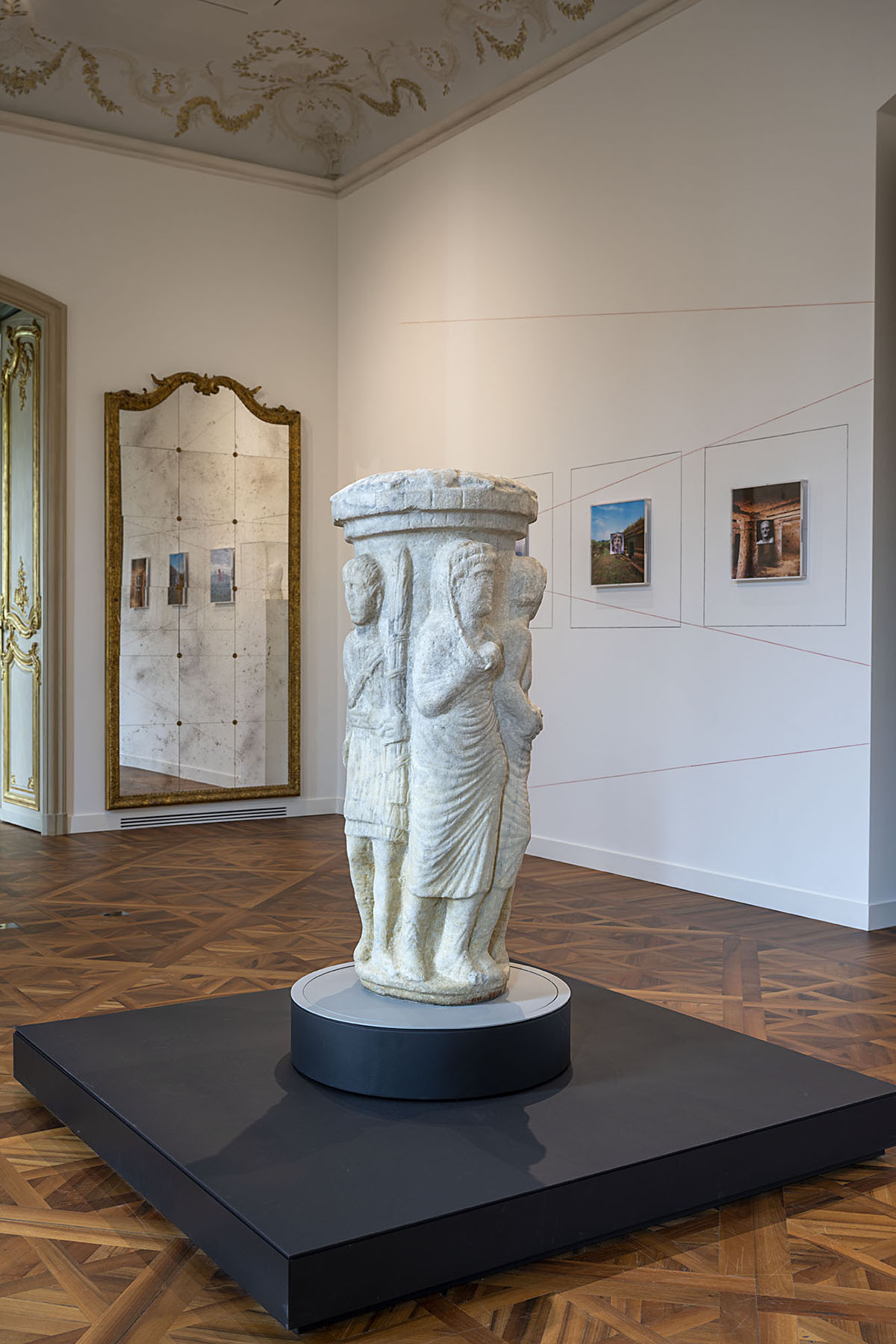
An installation view in the Sala Paolini
Read more: Italy Art Focus: Patrizia Sandretto Re Rebaudengo
LUX: What are your ambitions for the fondazione?
GFR: To become a global point of reference and to export our model worldwide, discovering or rediscovering artists and languages, and developing relationships with private and public institutions in Italy.
Find out more: fondazioneluigirovati.org
This article comes from a section of a wider feature originally published in the Autumn/Winter 2023/24 issue of LUX

